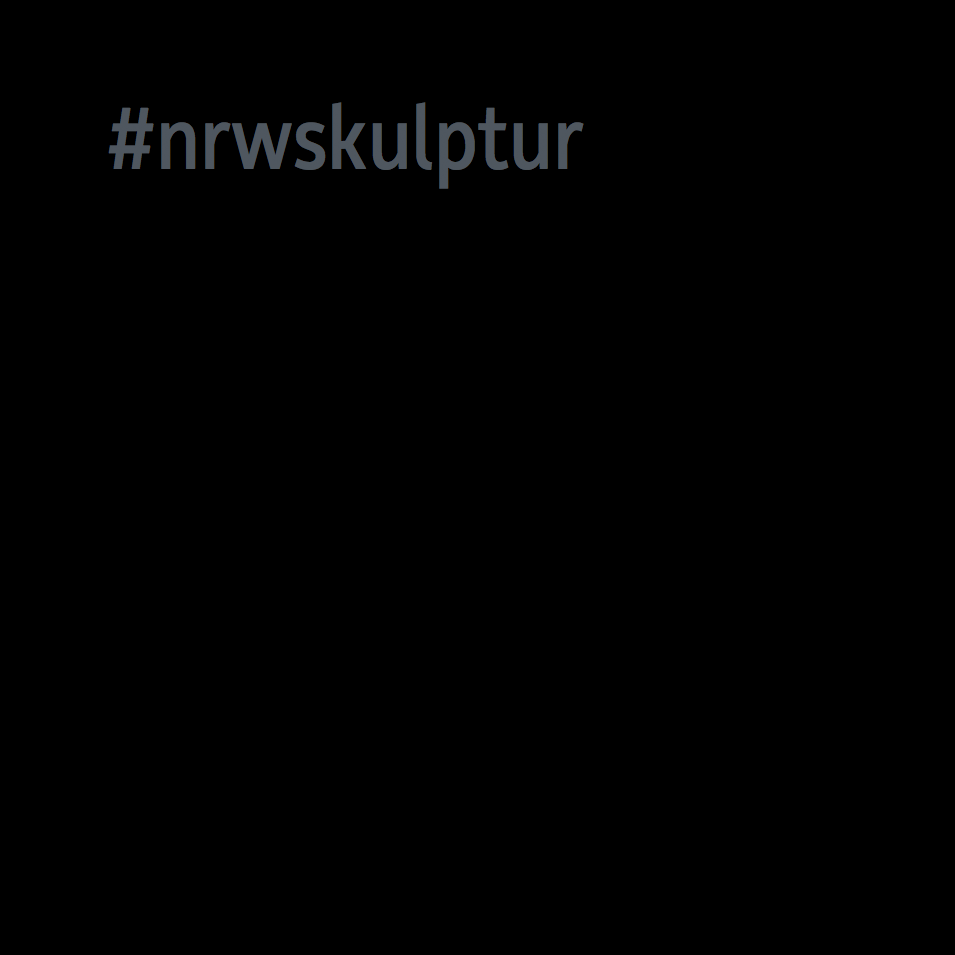U-Bahnhof König-Heinrich-Platz

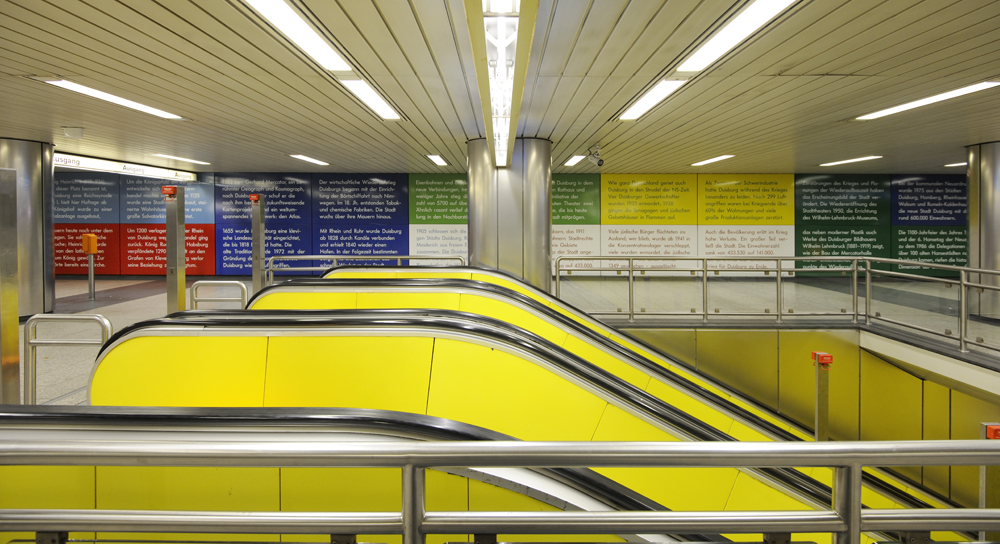
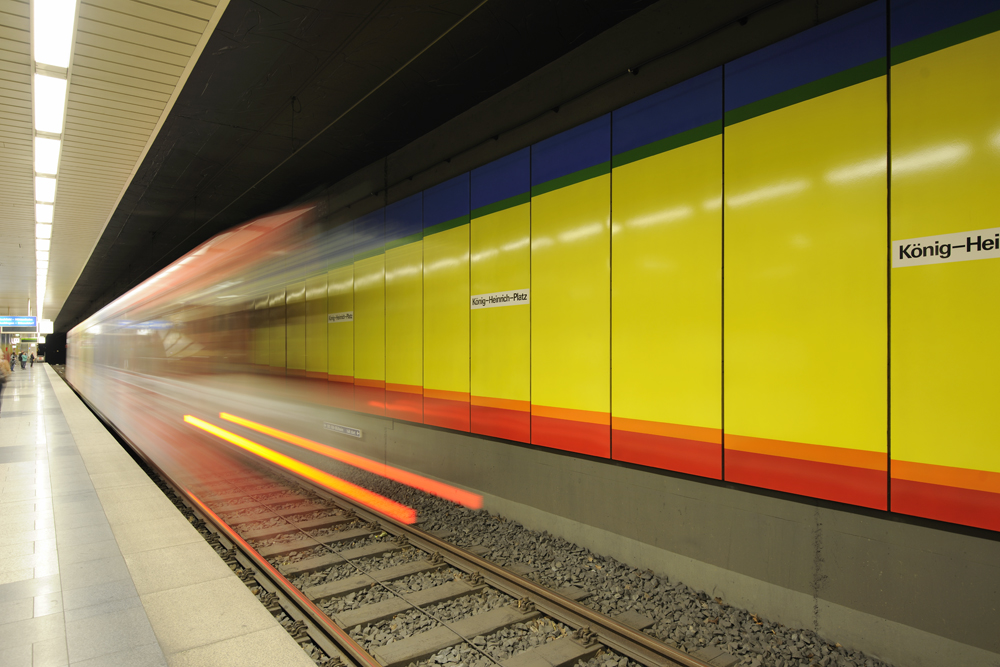
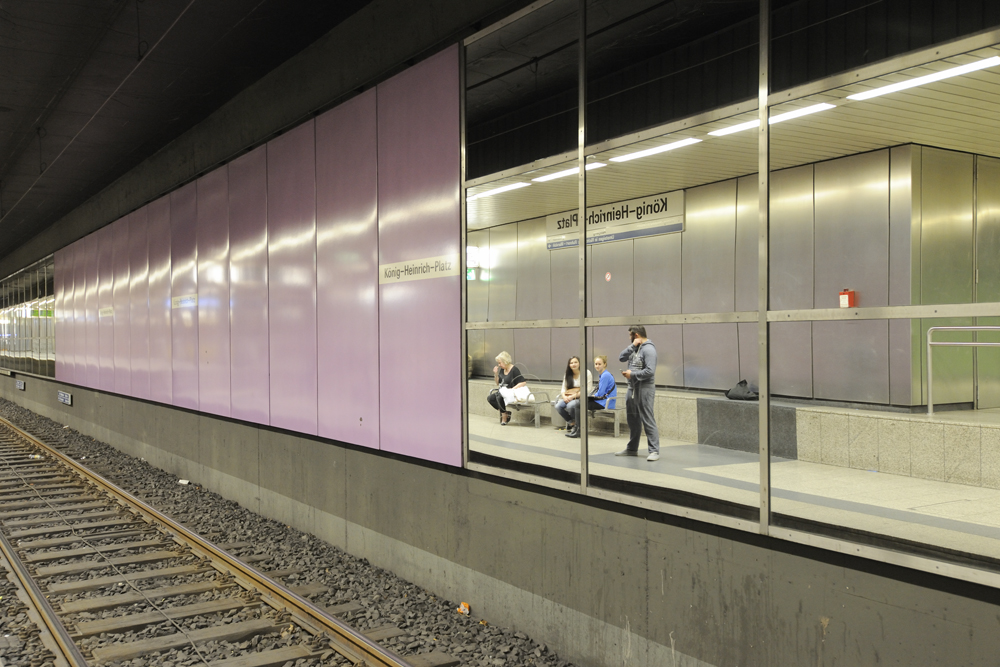
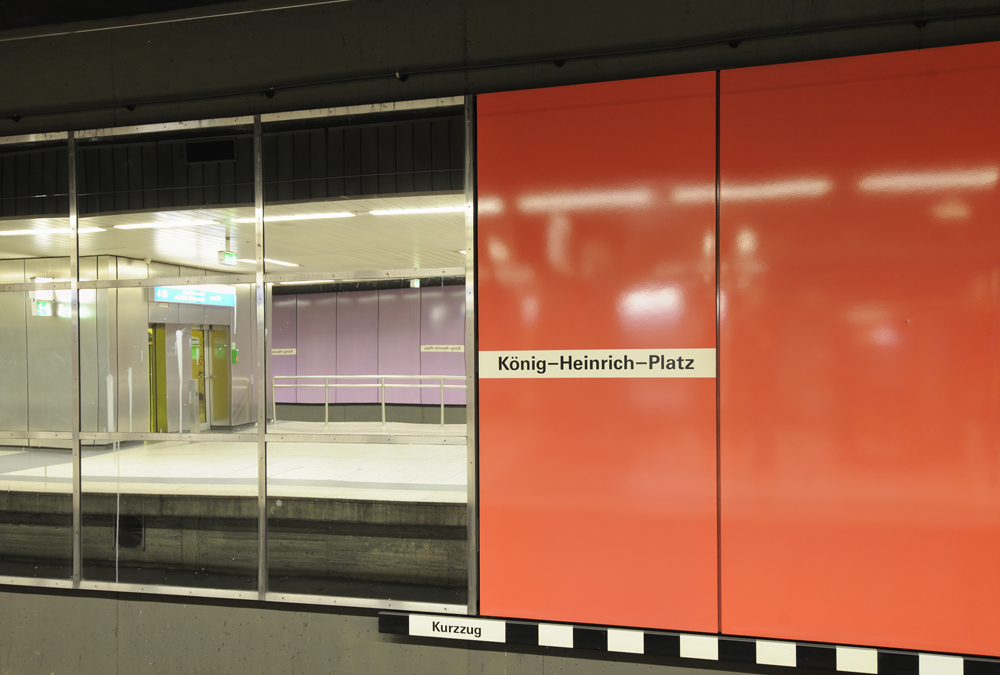
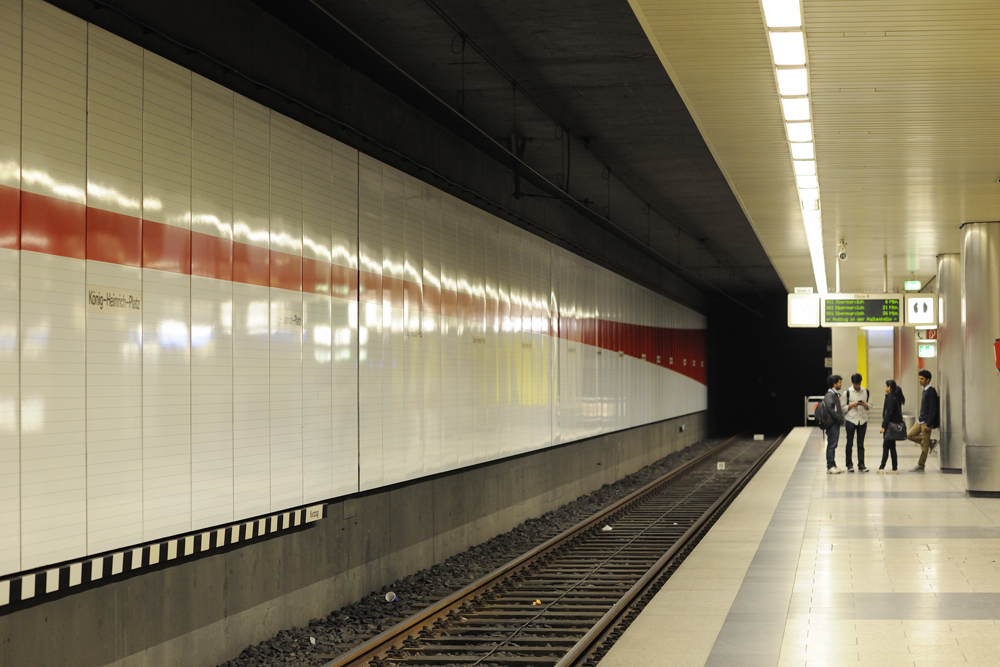
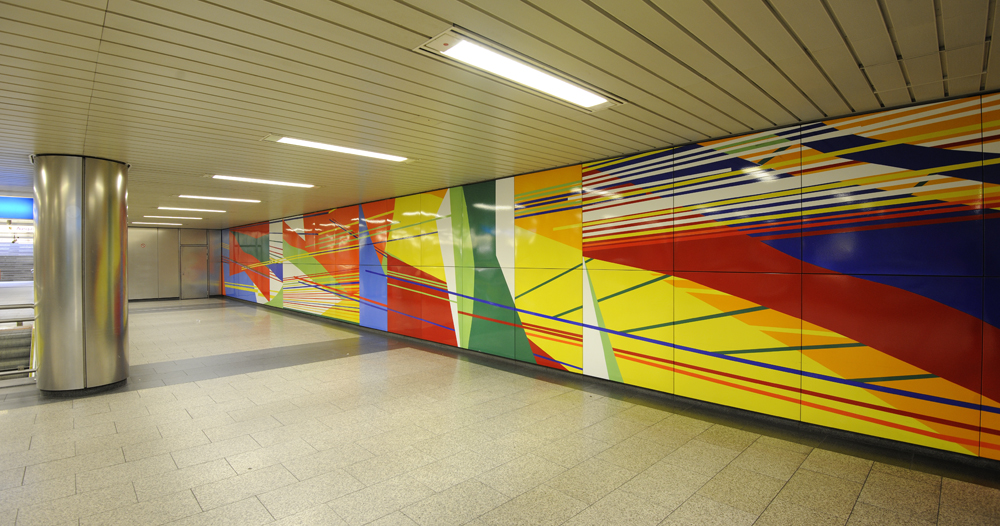
The design of the König-Heinrich-Platz U-Bahn station was a collaborative effort by former artist couple Isa Genzken and Gerhard Richter. This comprehensive installation includes walls, ceilings, columns, and escalators. Gerhard Richter had already received the design request from Duisburg in 1980 and then brought in Isa Genzken. Their project was completed between 1988 and 1992.
An escalator leads to the spacious entrance hall. The artists chose embossed matte stainless steel for the ceilings and walls. One of the walls was divided into rectangles on which texts in white print against a colored background provide information about the city’s history. An escalator with bright yellow side panels leads to line 901 (towards Mülheim and Obermarxloh). Here, the sides of the platforms are designed with curved segments that spread dynamically and then meet again in the middle. On one side, the walls are red and white; on the other, they feature the primary colors red, yellow, and blue, as well as orange and green. Gerhard Mercator (1512-1594), the important Duisburg cosmographer and cartographer, inspired the selection of circular shapes, which correspond to the curvature of the planets Mercury and Venus on a reduced scale.
One level higher (the trains travel towards Ruhrort and Meiderich) there are mirrors on the walls on either side of the platform, which are offset by monochrome color surfaces. The mirrors bring the commuter observations into the foreground, allowing them to pass the time by considering the various refractions and reflections.
An escalator leads to the southern entrance hall. Here, there is a 15-meter-long mural made of enameled panels. Clear, bold colors dominate the space, recalling Richter’s abstract paintings. This section also makes reference to the city of Duisburg: Blue areas and stripes indicate to the rivers and the harbor, while colored lines refer to streets and tracks.
As part of the RuhrKunstMuseen event series Neuenthüllungen, the U-Bahn station installation was cleaned, renovated, and brought back into the public consciousness in 2013.
Further reading:
Christoph Brockhaus (ed.): Stadtbild Duisburg. Identität, Wandel und Vision. Wilhelm Lehmbruck Museum Duisburg, 1999, pp. 87–98.
Ferdinand Ullrich and Walter Smerling (eds.): Public Art Ruhr. Die Metropole Ruhr und die Kunst im öffentlichen Raum. Cologne: Wienand Verlag, 2012, pp. 52–53.
Gerhard Richter
← Zur Startseite
Duisburg, König-Heinrich-Platz
